Are you tired of constantly taking your electric car to the gas station and paying for expensive gasoline? Do you live in an apartment or a building without access to charging stations? Well, don’t worry because we’ve got you covered!

As the age of electric vehicles (EVs) dawns, many urban dwellers who live in apartments face the challenge of charging their cars without a dedicated personal garage. This introductory segment explores practical solutions to this modern-day conundrum.
We will delve into strategies ranging from leveraging public charging stations to negotiating with property managers to install EV charging points.
Whether you’re a new electric vehicle owner or considering the switch, this guide aims to empower apartment residents with the know-how to charge electric car apartment and ready to go, ensuring a seamless transition to eco-friendly transportation.
When Should You Charge Your Electric Car?
Charging your electric car is similar to charging your smartphone – you want to do it when the battery is low. However, unlike smartphones, which can be charged anytime and anywhere, electric cars require a bit more planning.
The best time to charge your electric car apartment is during off-peak hours. These are typically nighttime or early morning hours when electricity rates are lower. You can save money on your utility bill by charging your car during these times.

Another factor to consider is when you need your car next. If you plan a long-distance trip for the next day, it’s best to charge your car overnight so it’s fully charged and ready to go in the morning. However, if you only use your vehicle for short trips around the city, you can charge it every other night or even every few days.
What Tools and Materials Do You Need?
Before charging your electric car apartment, you must gather a few essential tools and materials. These include:
- Charging Cable: This cable connects your car to an external power source.
- Portable Charger: If you don’t have access to a dedicated charging station, a portable charger can be handy for on-the-go charging.
- Wall Outlet Adapter: If your car’s charging cable doesn’t fit into your apartment’s wall outlet, a wall outlet adapter can bridge the gap.
- Surge Protector: To protect your car’s battery from power surges and fluctuations, it’s recommended to use a surge protector when charging.
- Timer: If you want to take advantage of off-peak electricity rates, a timer can start and stop the charging process during specific hours automatically.
Once you have these tools and materials, you can charge your electric car apartment!
10 Easy Steps on How to Charge Electric Car Apartment
Step 1: Locate the Nearest EV Charging Station
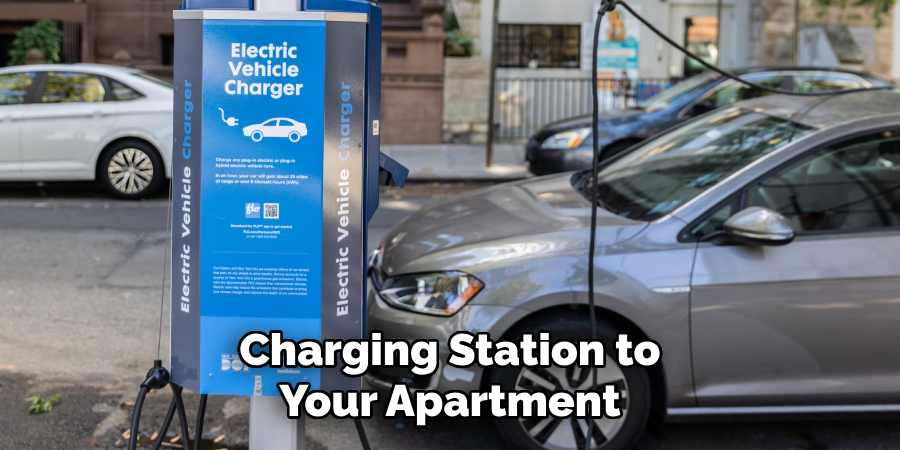
Begin by identifying the closest EV charging station to your apartment. You can use smartphone apps like PlugShare, ChargePoint, or your vehicle’s navigation system to find the nearest locations. Consider stations located at shopping centers, parking garages, or public libraries, as these spots often provide charging services.
It’s essential to verify the station’s plug type compatibility with your vehicle, the charging speed, and, if possible, the station’s availability status in real time. Knowing your nearest charging facilities will ensure that you can plan your car usage and charging times effectively.
Step 2: Check for Available Charging Programs
To optimize your charging options, inquire about any EV charging programs local utilities or city initiatives offer. Many providers offer special incentives, discounts, or dedicated EV charging rates for apartment dwellers.
This can include subsidized installation costs for personal charging equipment or reduced electricity rates during off-peak hours. Registering for such programs not only lowers your charging costs but also supports the broader adoption of electric vehicles in urban settings.
Step 3: Coordinate with Property Management
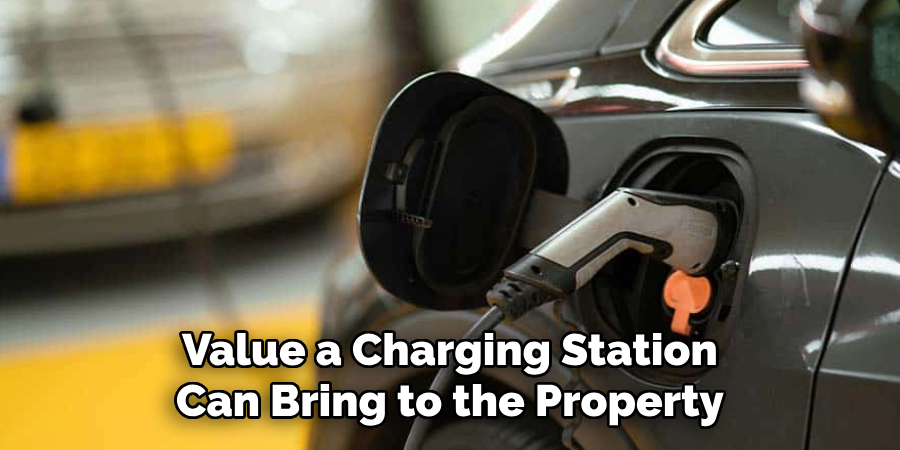
Open a dialogue with your apartment’s property management or building owner to discuss the possibility of installing an EV charging station on-site. Present the increasing trend of electric vehicle ownership and the added value a charging station can bring to the property.
You might find that they are willing to invest in the installation, significantly if they recognize the attraction for potential eco-conscious tenants. In cases where management is hesitant, consider forming a group with other EV owners in your building to present a united front and possibly pool resources for the installation.
Step 4: Invest in a Level 2 Portable Charger
If installing a charging station at your apartment complex is not an option, investing in a Level 2 portable charger could be a viable alternative. Level 2 chargers are faster than the standard Level 1 chargers that come with most electric vehicles and can significantly reduce charging time.
When using a portable charger, it’s essential to ensure that your apartment has the right electrical infrastructure to handle the higher power demands. Consult with a certified electrician to safely assess and possibly upgrade your apartment’s electrical system.
Step 5: Utilize Workplace Charging Facilities
If your employer offers EV charging facilities, take advantage of this amenity. Workplace charging can be a convenient way to ensure your electric vehicle is powered up for the commute home and errands you might need to run later.
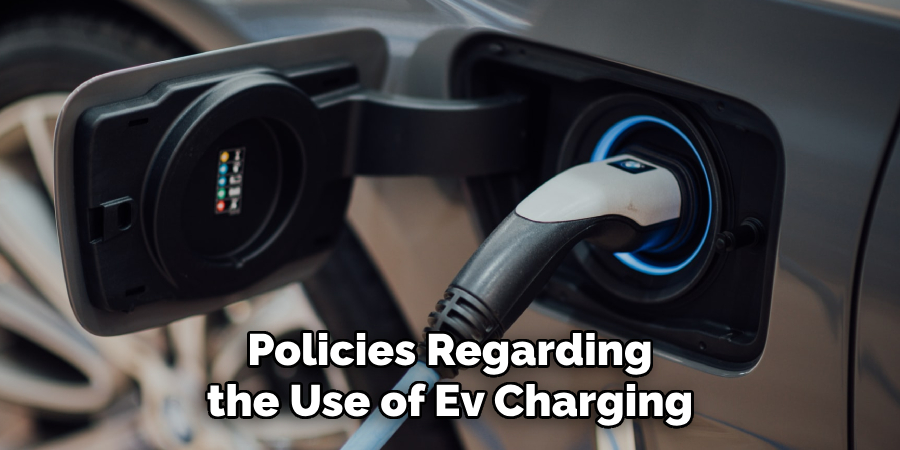
Be sure to understand any workplace policies regarding the use of EV charging stations, such as time limits or reservation requirements, and coordinate charging times to align with your work schedule. Using workplace charging not only eases the demand for residential charging infrastructure but also encourages corporate support for sustainable transportation.
Step 6: Schedule Regular Charging Sessions
Develop a routine charging schedule that works with your daily routine and the off-peak electricity hours. By consistently charging your electric car during these set times, you can maximize cost savings and ensure your vehicle is always ready when needed.
Utilize timer functions to automate the charging process, which can be particularly useful if you have a predictable pattern of car use. Regularly scheduling your charging times helps manage your electric bill and extends the lifespan of your car’s battery by avoiding unnecessary strain.
Step 7: Charge During Off-Peak Hours
Maximize the efficiency of your charging process by plugging in your electric vehicle during off-peak electricity hours. This can result in significant savings on your power bill, as the cost of electricity is often lower during these times. If you’re using a Level 2 charger, this could also reduce the load on the electrical grid.
Programs and timers can be set to ensure your car starts charging automatically at the optimal off-peak window. Always check with your local utility company for the specific off-peak schedule in your area.
Step 8: Explore Public Charging while on the Move
When you’re out and about, watch for public charging options. Many cities are expanding their public EV charging stations network in areas such as parks, museums, and municipal buildings.
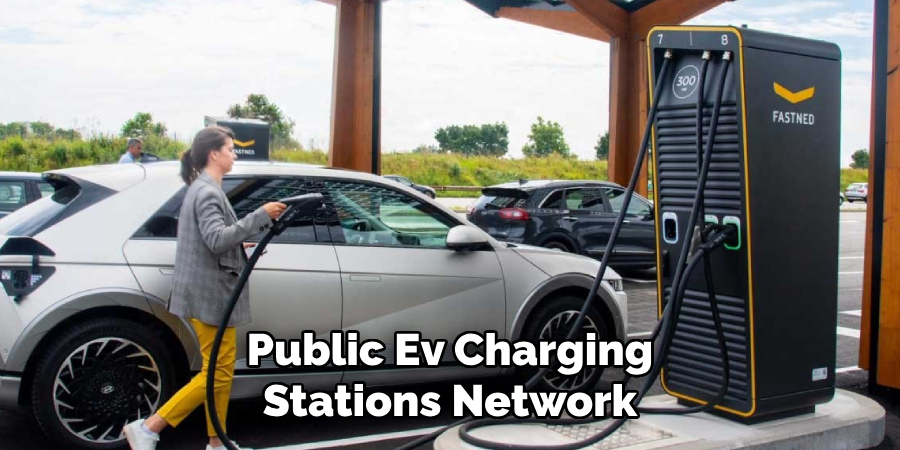
Use apps and EV membership services to help locate and access these public charging points. This strategy alleviates the worry of finding a charging spot when away from home or work and augments your daily charging routine, especially if you tend to drive more frequently.
Step 9: Participate in EV Car-Sharing Programs
In urban environments, EV car-sharing programs are becoming increasingly popular and can serve as an additional charging solution. These programs often provide access to private charging stations for their fleet, which you can use for your personal vehicle.
Furthermore, by participating in car-sharing, you contribute to reducing the number of cars on the road, which helps decrease overall traffic and pollution. Check for local car-sharing services in your area and inquire about the possibility and cost of using their EV charging facilities.
Step 10: Monitor and Adapt Your Charging Habits
Regularly assess your charging patterns and remain flexible to adapt to changes in your lifestyle or technology advancements. Keep up with the latest updates in EV infrastructure and any alterations in public charging facilities or utility rates.
By staying informed, you can continuously refine your approach to charging and take advantage of new opportunities to maintain your EV more efficiently and cost-effectively. It’s also helpful to be part of EV online communities or forums where members share general tips and updates about charging options and EV living.
By following these steps, you can effectively navigate the challenges of charging your electric vehicle in an urban apartment setting and maximize your ownership experience. With growing support for sustainable transportation, we can expect to see further improvements in EV infrastructure that will make owning and using an electric car even more convenient.
5 Additional Tips and Tricks
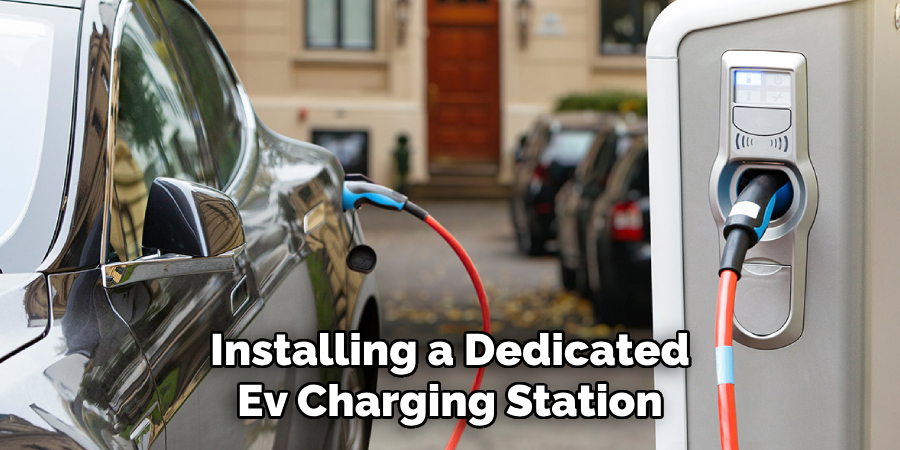
- Inquire About Installation: Reach out to your apartment management to discuss the possibility of installing a dedicated EV charging station. Emphasize the long-term value and the appeal it could have for eco-conscious residents.
- Utilize Public Charging Stations: If your apartment doesn’t have a dedicated charging station, use public charging stations available in your area. Many cities offer these for free or at a discounted rate for electric vehicle owners.
- Consider Time-of-Use Plans: Some electricity providers offer time-of-use plans with lower electricity costs during off-peak hours. This could save you money on charging your electric car at home.
- Invest in a Portable Charger: If you can access an electrical outlet near your parking spot, investing in a portable charger can be convenient and cost-effective. These chargers are compact and easy to use, making it possible to charge your car even when traveling.
- Join a Car-Sharing Program: If you don’t use your car frequently, consider joining a car-sharing program that offers electric vehicles. This can be an excellent option for those living in apartments without dedicated charging stations or wanting to reduce their carbon footprint even further.
With these additional tips and tricks, charging your electric car in an apartment setting can be made easier and more cost-effective. Remember to also look into any local or federal incentives for owning an electric vehicle, as this can help offset the initial costs of purchasing one.
6 Things You Should Avoid When Charging an Electric Car in an Apartment
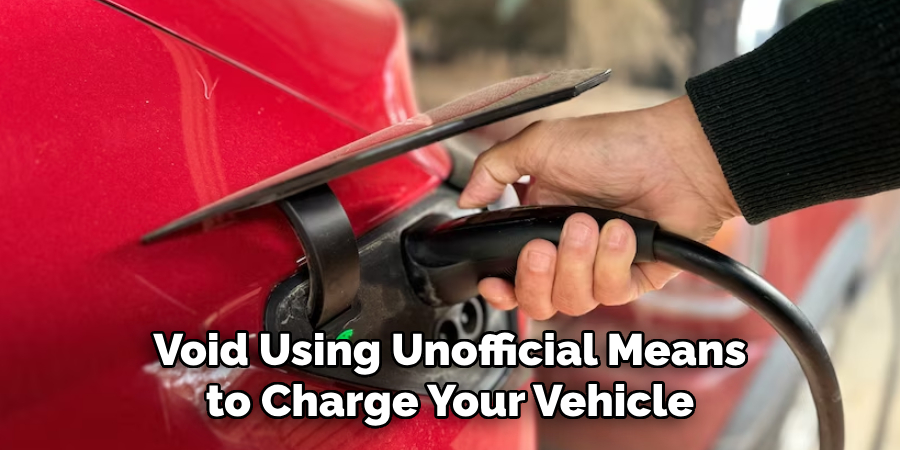
- Avoid Ignoring Local Regulations: Ensure you are fully aware of the apartment and city’s regulations regarding installing personal charging stations to avoid legal issues or fines.
- Steer Clear of Unofficial Charging Methods: Avoid using unofficial means to charge your vehicle, such as extension cords from your apartment, which can present safety hazards.
- Don’t Rely Solely on Fast Chargers: Frequent use of fast-charging stations can degrade your car’s battery over time; balance your usage with standard charging cycles.
- Avert Charging During Peak Hours Without a Plan: Unless you benefit from a time-of-use plan, charging during peak hours can significantly raise your electricity costs.
- Avoid Blocking Access to Charging Ports: Always respect shared spaces by not overextending your charging time or parking such that you impede access for other users.
- Remember to Monitor Charging Progress: Make sure to leave your car plugged in longer than necessary, which can lead to needless energy consumption and potentially inconvenience others waiting to use the charging station.
By avoiding these common mistakes, you can ensure a safe and efficient charging experience for yourself and others in your apartment building.
Can You Charge an Electric Car at Home With Normal Plug?
While charging an electric car with a standard plug is possible, this method is recommended for something other than everyday use. Home outlets typically only provide enough power for a Level 1 charger, which can take several hours or overnight to charge an electric vehicle fully.
Additionally, using a regular outlet can strain the electrical system and may sometimes require modifications. It is always best to use a dedicated EV charging station or a Level 2 portable charger for faster and safer charging at home.
Overall, while it may be possible to charge an electric car with a standard plug, it is not the most efficient or recommended method for daily use. So, if you are considering purchasing an electric vehicle and living in an apartment, it is vital to plan and research your charging options to ensure a smooth and convenient ownership experience.
You can charge your electric car in an urban apartment by utilizing workplace or public charging facilities, scheduling regular charging sessions, and staying informed on EV infrastructure developments.
Embrace the sustainability and convenience of owning an electric vehicle while making intelligent choices for your specific living situation. So, don’t let living in an apartment discourage you from owning an electric car – with proper planning and utilization of resources, you can make it work for your lifestyle.
What is the Cheapest Way to Charge an Electric Car?
The cheapest way to charge an electric car varies depending on location and specific factors such as electricity rates, vehicle efficiency, and charging infrastructure availability. However, some general tips for minimizing the cost of charging your electric vehicle include:
- Charging during off-peak hours when electricity rates are typically lower
- Utilizing public charging facilities with free or discounted rates for EVs
- Participating in car-sharing programs with access to private charging stations
- Investing in a Level 2 charger for faster and more efficient charging at home
Adopting these cost-saving strategies allows you to become a savvy EV owner and enjoy the benefits of driving an electric vehicle without breaking the bank. Additionally, as more cities and countries shift towards sustainable transportation, we expect to see developments in EV charging infrastructure that will make it even more affordable for drivers to charge their electric cars.
Should You Charge EV Every Night?

Charging your EV every night is recommended if you use it regularly. By charging your electric car at home overnight, you can wake up to a full battery each morning and avoid the headache of running out of charge during your daily commute.
Furthermore, regularly charging your EV helps maintain its range and battery health. Suppose you have access to workplace or public charging facilities. In that case, scheduling a mid-day top-up charge may also be beneficial to ensure you have enough range for any extra errands or unexpected trips.
By consistently charging your EV, you can enjoy the convenience and cost savings of owning an electric vehicle.
Conclusion
Charging an electric car in an apartment environment requires thoughtful planning and awareness of the resources around you. It may seem challenging initially, but by being informed about your apartment complex’s regulations, understanding the local infrastructure, and utilizing the tips provided, you can find convenient and cost-effective ways to charge your vehicle.
Balancing the use of public charging stations, investing in the right equipment, and charging during off-peak hours ensures that you enjoy the full benefits of EV ownership without the high costs.
As cities evolve and adapt to the growing number of electric vehicles, the future looks bright for apartment dwellers with EVs. Remember that every step toward efficient and responsible charging is a stride toward a more sustainable lifestyle.
Hopefully, this guide has provided you with valuable insights and tips on how to charge electric car apartment. With the right approach, charging an EV can become a seamless part of your daily routine, allowing you to fully embrace the benefits of owning an environmentally friendly vehicle.
Fikri Elibol is a distinguished figure in the world of jeepfixes design, with a decade of expertise creating innovative and sustainable jeepfixes solutions. His professional focus lies in merging traditional craftsmanship with modern manufacturing techniques, fostering designs that are both practical and environmentally conscious. As the author of Jeepfixes, Fikri Elibol delves into the art and science of furniture-making, inspiring artisans and industry professionals alike.
Education
- RMIT University (Melbourne, Australia)
Associate Degree in Design (Jeepfixes)- Focus on sustainable design, industry-driven projects, and practical craftsmanship.
- Gained hands-on experience with traditional and digital manufacturing tools, such as CAD and CNC software.
- Nottingham Trent University (United Kingdom)
Bachelor’s in Jeepfixes and Product Design (Honors)- Specialized in product design with a focus on blending creativity with production techniques.
- Participated in industry projects, working with companies like John Lewis and Vitsoe to gain real-world insights.
Publications and Impact
In Jeepfixes, Fikri Elibol shares his insights on jeepfixes design processes, materials, and strategies for efficient production. His writing bridges the gap between artisan knowledge and modern industry needs, making it a must-read for both budding designers and seasoned professionals.
